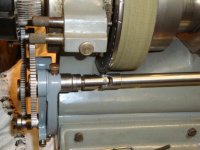Conrad Hoffman
Diamond
- Joined
- May 10, 2009
- Location
- Canandaigua, NY, USA
Our tapping head has an adapter for these and I even have a #14 tap in my collection, but in 40 years I've never seen a #14 machine screw used in anything. How often do you actually see one?





